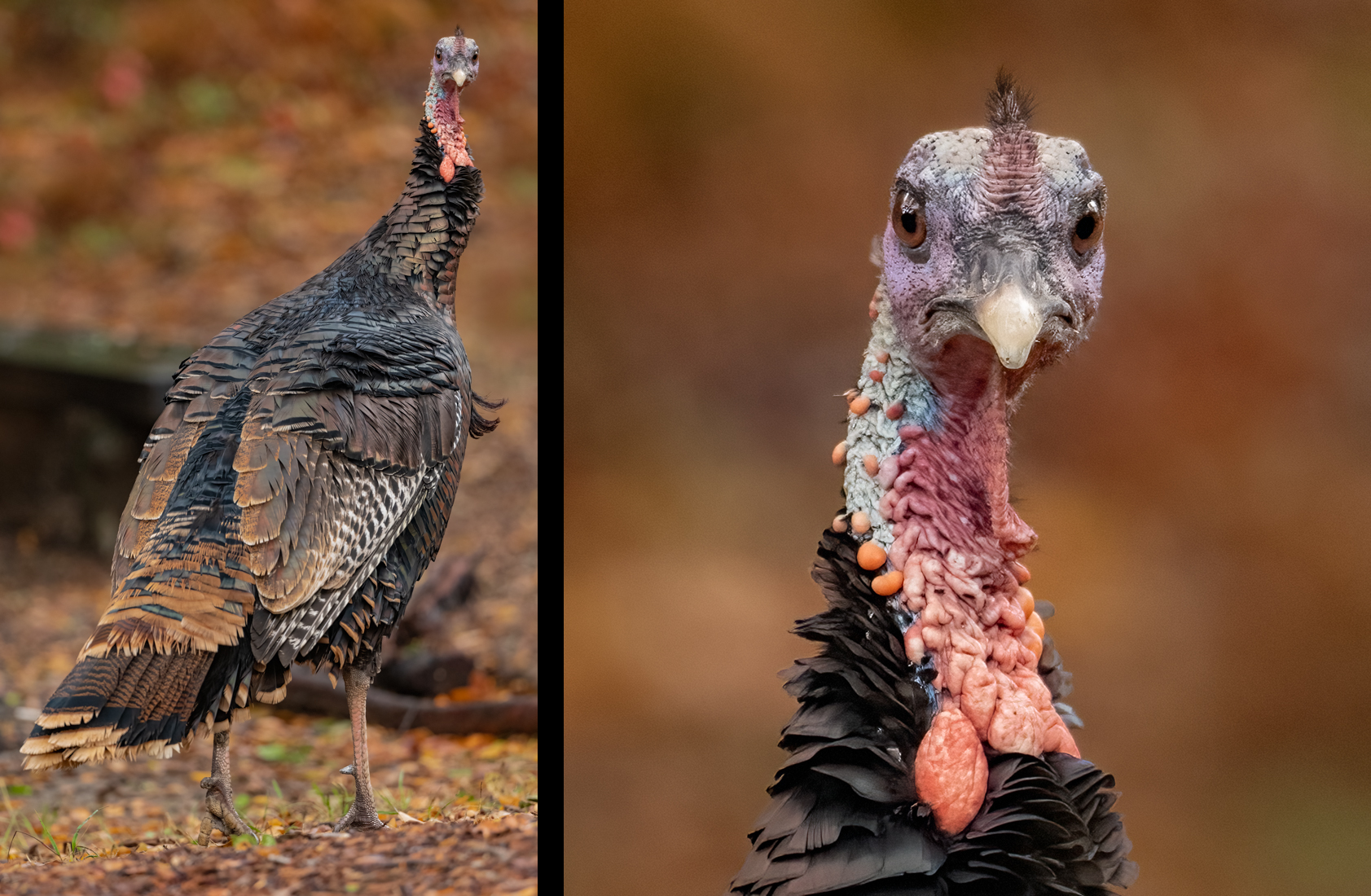
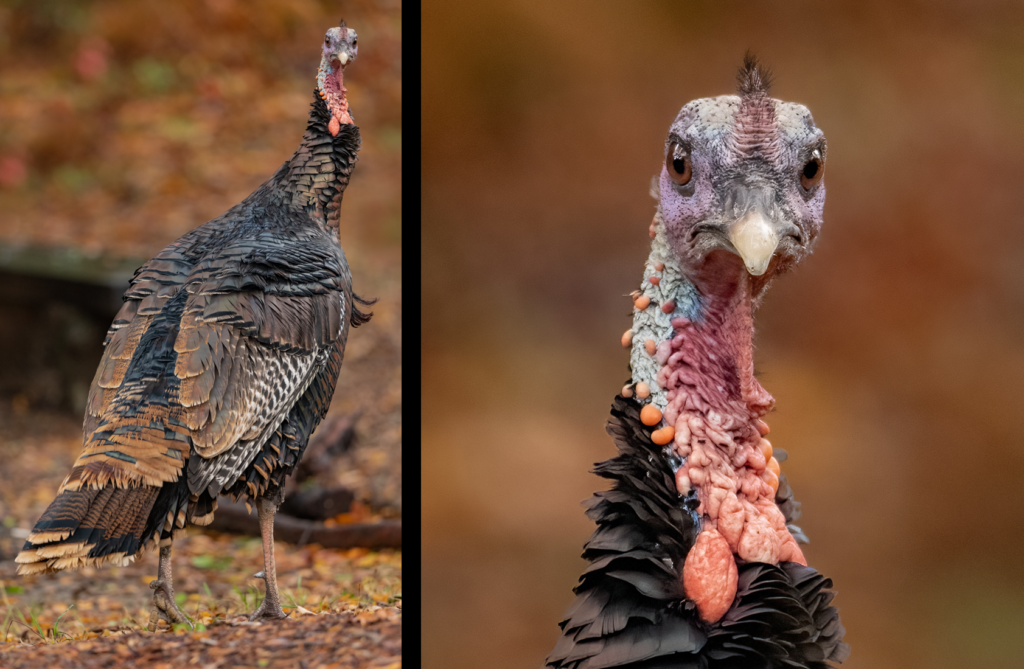
Wild turkeys are amazing birds, even more so because – despite their size – these birds are often overlooked. While turkeys are well known by hunters and holiday chefs, photographers have a lot to discover about these crazy and beautiful birds.
A Turkey by any other name…
Turkeys go by different names, depending on their sex and age. Adult males are named toms, while adult females are hens. Younger male turkeys are jakes and young females are jennies, while very young birds that have just recently hatched will be called poults, no matter whether they are male or female. A flock of wild turkeys is called a rafter.
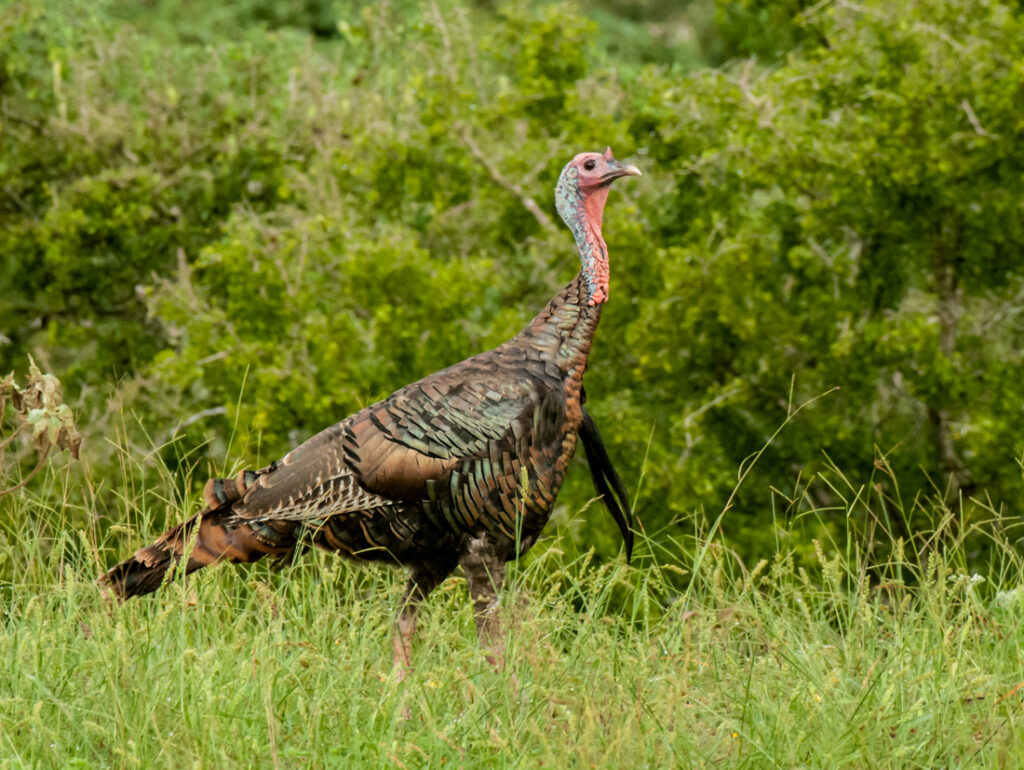
An adult wild turkey has approximately 5,500 feathers, with 18 longer feathers that make up the male’s characteristic tail fan. Many of a wild turkey’s feathers have a distinct iridescence that creates a metallic sheen. This can be difficult to capture well in a photo, and good lighting is essential to truly highlight the full range of beautiful color in these birds’ plumage.
Capture the Wild Turkey in All Its Beauty
One of the best times to photograph wild turkeys is while the birds are foraging, which they do for hours each day. Wild turkeys are omnivores and eat a wide range of foods, including seed and grain as well as berries, nuts, insects, snails, slugs, small lizards, plant buds, and bits of grass. Because they feed on so many different foods, wild turkeys may be seen foraging nearly anywhere, including along the fringes of airports, in cemeteries, or even in urban parks or neighborhoods. This gives every photographer a good opportunity to enjoy these stunning birds.
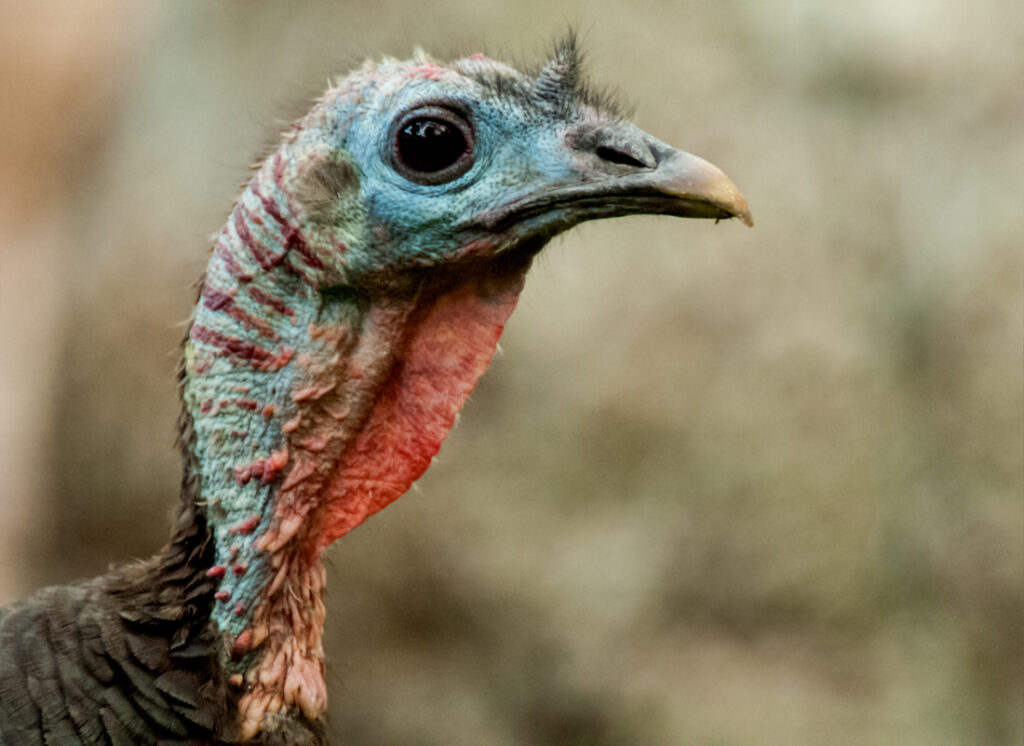
In addition to feather color, a photographer should pay particular attention to a turkey’s skin color. The bare head and wattles of a wild turkey can change color in seconds if the bird is emotional or excited, and may range from white or pale blue to a darker blue, red, or pinkish hues. Shooting in a burst is the best way to capture different shades to showcase a turkey’s changing mood.
Gobble the Facts About Turkeys
One thing many birders and photographers alike may not realize is that the wild turkey (Meleagris gallopavo) that is so familiar isn’t the only wild turkey species. There is also the ocellated turkey (Meleagris ocellata), found only on the Yucatan peninsula. These turkeys are even more colorful than their northern cousins, with bright orange wattles on their face and neck, overall brighter skin tones, and brighter iridescence on their feathers.
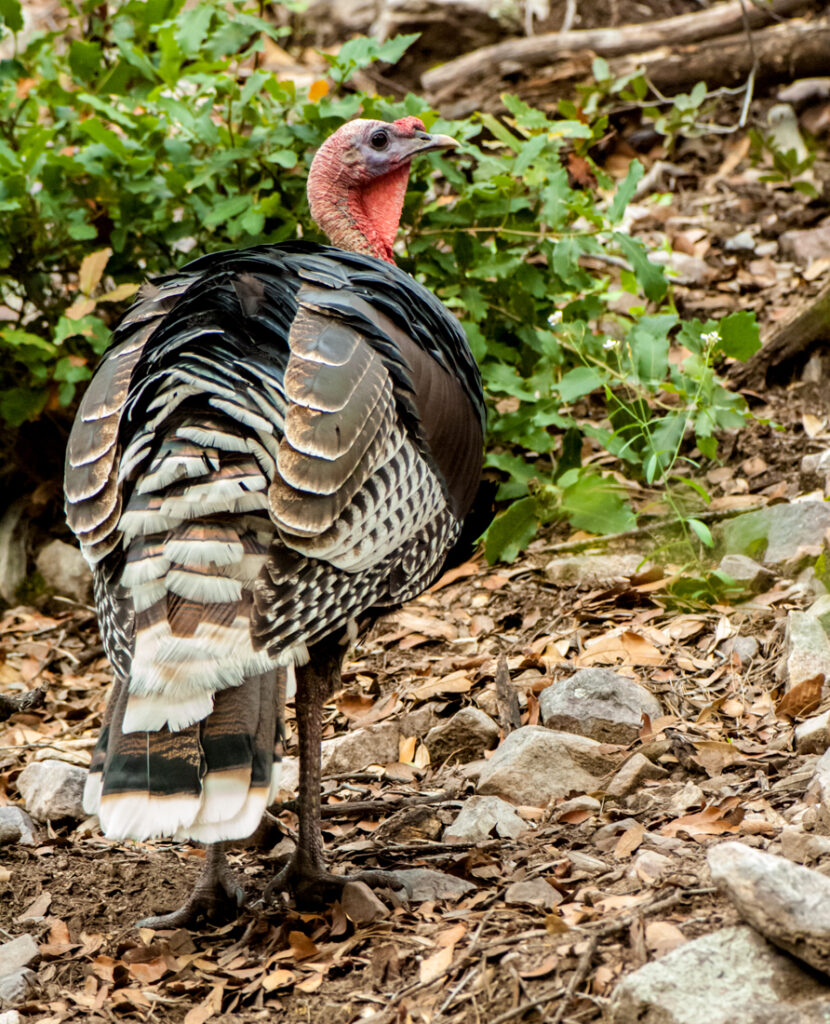
While there are many interesting facts to learn about the wild turkey, the most distressing fact is that these glorious birds were once nearly extinct. In the 1930s, overhunting and deforestation took their toll on wild turkeys, and the birds were nearly lost forever. Today, their populations have recovered and there are more than seven million wild turkeys in the world, giving every photographer today a fine chance to see and enjoy these amazing birds. The more photographers can see and capture the beauty of these birds, the better we will be able to ensure they will never be so close to extinction again.


